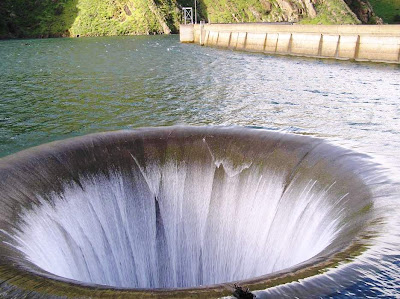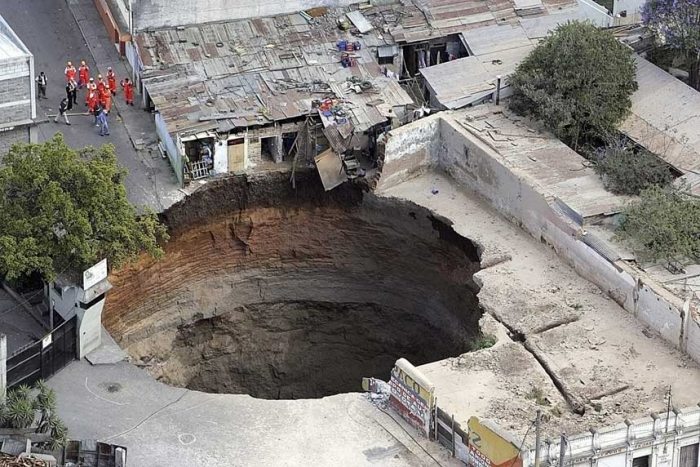Attention: Please take a moment to consider our terms and conditions before posting.
Would you sail or swim across this?

DA9
Posts: 11,109
Big Blue Hole near Belize


0
Comments
-
Hell no!
I reckon a giant sea worm lives there!0 -
Think that's where our money has been going for the past 4 years.0
-
Kay has dived off of another one like this near Cuba...she said it was how she would imagine it to be skydiving when you jump off the edge (albeit in slow motion) She said its quite disorientating as you have no perception of the depth when you look over the edge...pretty amazing picture0
-
looks like one of the holes created in the SILVER SURFER0
-
I swam across The Quaggy (just off Lewisham High Street) circ 1959.....far more dangerous!0
-
like this....0
-
[cite]Posted By: Dazzler21[/cite]Hell no!
I reckon a giant sea worm lives there!
In all honesty, it sends shivers down my spine when I look at that picture, frightening.0 -
[cite]Posted By: SoundAsa£[/cite]I swam across The Quaggy (just off Lewisham High Street) circ 1959.....far more dangerous!
I fell in it in near Middle Park Avenue, circa 1976/770 -
[cite]Posted By: Telnotinoz[/cite]Kay has dived off of another one like this near Cuba...she said it was how she would imagine it to be skydiving when you jump off the edge (albeit in slow motion) She said its quite disorientating as you have no perception of the depth when you look over the edge...pretty amazing picture
Rather her than me.0 -
[cite]Posted By: DA9[/cite][cite]Posted By: Dazzler21[/cite]Hell no!
I reckon a giant sea worm lives there!
In all honesty, it sends shivers down my spine when I look at that picture, frightening.
It is well scary looking!
Honestly cant blame you!0 -
Sponsored links:
-
I remember reading somewhere that Andy Hunt (He plays upfront) now runs tours to here and other places in Belize[cite]Posted By: DA9[/cite]Big Blue Hole near Belize 0
0 -
I've been there. Can't dive, so (obviously) didn't dive down it, but I went out on the boat and did a plane ride over it - it is incredibly beautiful (unlike most of Belize itself, which is a shithole) and is one of the few 'beauty spots' I've been to that live up to its reputation.0
-
Now this may be stupid but could it be where a massive comet hit millions of years ago?0
-
[cite]Posted By: Dazzler21[/cite]Now this may be stupid but could it be where a massive comet hit millions of years ago?
Good point, will investigate0 -
Yes and I would dive down it as well. I can't understand the fear at all. I wouldn't swim across though unless I had a life jacket.0
-
Nope - there are loads of them all round the world. They're called 'sinkholes' and are the after-effects of a limestone cave system collapsing in on itself.
Geology degree FTW!0 -
[cite]Posted By: Alex Wright[/cite]
I remember reading somewhere that Andy Hunt (He plays upfront) now runs tours to here and other places in Belize[cite]Posted By: DA9[/cite]Big Blue Hole near Belize
did do. Andy has now moved from Belize to another Caribbean Island, can't remember it's name, smallish not one of the major one's.0 -
Glory Hole, Monticello Dam, California, used for an overflow at the dam

Sink hole Guatemala 0
0 -
Don't think that one in Guatemala is owt to do with limestone caves. Its more likely a collapsed sewer - especially since the substrate indicated in the picture seems to consist of topsoil, clay and some loose non-solid base rather than any solid rock0
-
The Great Blue Hole is a large underwater sinkhole off the coast of Belize. It lies near the center of Lighthouse Reef, a small atoll 100 kilometres (62 mi) from the mainland and Belize City. The hole is circular in shape, over 300 metres (984 ft) across and 125 metres (410 ft) deep.[1] It was formed as a limestone cave system during the last glacial period when sea levels were much lower. As the ocean began to rise again, the caves flooded, and the roof collapsed.[2] Believed to be the world’s largest feature of its kind, the Great Blue Hole is part of the larger Belize Barrier Reef Reserve System, a World Heritage site of the United Nations Educational, Scientific and Cultural Organization (UNESCO).[1]
Discovery and exploration
This site was made famous by Jacques-Yves Cousteau who declared it one of the top ten scuba diving sites in the world. In 1971, he brought his ship, the Calypso, to the hole to chart its depths.[3] Investigations by this expedition confirmed the hole's origin as typical karst limestone formations, formed before rises in sea level in at least four stages, leaving ledges at depths of 21, 49 and 91 meters (69, 161 and 299 ft). Stalactites were retrieved from submerged caves, confirming their previous formation above sea level. Some of these stalactites were also off-vertical by 10°-13° in a consistent orientation, thus indicating that there had also been some past geological shift and tilting of the underlying plateau, followed by a long period in the current plane.
Tourism
This is a popular spot amongst recreational scuba divers, who are lured by the opportunity to dive in crystal clear water and meet several species of fish, including giant groupers, nurse sharks and several types of reef sharks such as the Caribbean reef shark and the Blacktip shark. Other species of sharks, like the bull shark and hammerheads, have been reported there, but are not regular sightings. Usually, dive trips to the Great Blue Hole are full-day trips, which include one dive in the Blue Hole and two further dives in nearby reefs.
On-shore caves of similar formation, as large collapsed sinkholes, are well known in Belize,[4] and in the Yucatan Peninsula, where they are known as "cenotes".0 -
Sponsored links:
-
[cite]Posted By: Dazzler21[/cite]Now this may be stupid but could it be where a massive comet hit millions of years ago?
Nope...it was Peakies Rocket!0 -
[cite]Posted By: SoundAsa£[/cite][cite]Posted By: Dazzler21[/cite]Now this may be stupid but could it be where a massive comet hit millions of years ago?
Nope...it was Peakies Rocket!
Bill Haley weren't that fat anyway0 -
Rat Hole

sh***hole 0
0 -
Oi! That's the most beautiful gothic building in Britain, it's not its fault that's it's filled with arseholes!0
-
Which one FoD0
-
[cite]Posted By: DA9[/cite]Glory Hole, Monticello Dam, California, used for an overflow at the dam
Trust you to bring up a glory hole!!0 -
The ones which is a gothic building...[cite]Posted By: Dazzler21[/cite]Which one FoD 0
0 -
Whooooooooooooooooooooooosh
I am not thick FoD I know what a gothic building is lol - Barcelona for instance has some of the most amazing gothic buildings in the world....
The joke was about being full of Arseholes....0 -
[cite]Posted By: DaveMehmet[/cite][cite]Posted By: DA9[/cite]Glory Hole, Monticello Dam, California, used for an overflow at the dam
Trust you to bring up a glory hole!!
LOL0 -
I have no idea what the hell you are going on about.[cite]Posted By: Dazzler21[/cite]Whooooooooooooooooooooooosh
I am not thick FoD I know what a gothic building is lol - Barcelona for instance has some of the most amazing gothic buildings in the world....
The joke was about being full of Arseholes....0







